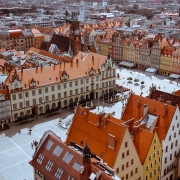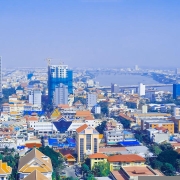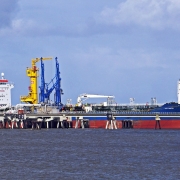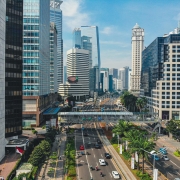When was the Sovietisation of Eastern Europe?
Topic of Study [For H2 and H1 History Students]:
Paper 1: Understanding the Cold War (1945-1991)
Section A: Source-based Case Study
Theme I Chapter 1: Emergence of Bipolarity after the Second World War
Historical context: Dividing the spoils
As the curtains of the Second World War close, the Allied Powers led by the ‘Big Three’ (USA, Soviet Union and Great Britain) gathered in several meetings to discuss the future of post-war Europe, particularly the Yalta (February 1945) and Potsdam (August 1945). In October 1944, Soviet Premier Josef Stalin and British Prime Minister Winston Churchill met to sign a secret informal agreement, known as the ‘Percentages agreement’. This agreement gave Stalin control over the Eastern European nations.
The moment was apt for business, so I said [to Stalin], ‘Let us settle about our affairs in the Balkans. Your armies are in Romania and Bulgaria. We have interests, missions, and agents there. Don’t let us get at cross-purposes in small ways. So far as Britain and Russia are concerned, how would it do for you to have ninety percent predominance in Romania, for us to have ninety per cent of the say in Greece, and go fifty-fifty about Yugoslavia?‘
An excerpt from “Stalin’s Wars: From World War to Cold War, 1939-1953” by Geoffrey Roberts.
Strategic considerations: Stalin’s ruminations
During the Second World War, Stalin believed that territorial occupation enables the government to establish its own ‘social system’. Furthermore, the Soviet Premier had anticipated a clash with the capitalist world in the near future, thus necessitating the creation of a pro-Soviet bloc in Eastern Europe.
The Litvinov document was prepared in association with the Yalta Conference and explored the possibility of establishing an agreement about three spheres of influence on the continent. Linked to the Soviet Union would be a zone in the east and north, including Finland, Sweden, Poland, Hungary, Czechoslovakia, Romania, Yugoslavia, Bulgaria, and Turkey. A second zone would be dominated by Britain and would include the Netherlands, Belgium, France, Spain, Portugal, and Greece.
An excerpt from “The Cambridge History of the Cold War (Volume 1)” by Melvyn P. Leffler and Odd Arne Westad.
Start of the Sovietisation: Poland
In late July 1944, the Polish National Liberation Committee (PKWN) accompanied Soviet troops into Poland. A pro-Communist Polish national government was formed in Lublin. At the same time, the Soviet forces obliterated resistance linked to the Polish government-in-exile based in London.
Aside from the regular military authorities, Serov proceeded to divide Poland into districts, each of which was overseen by NKVD units whose job it was to destroy the opponents of the Soviet Union. He himself led the effort to infiltrate AK units, arrest those members who refused to leave the underground and turn over their weapons, and torture and brutalize those captured, ferreting out information about other resistance members and their units. According to Soviet figures, by the end of the war, some twenty-five thousand Poles, mostly AK fighters, were in NKVD camps; thousands more had been killed in a series of coordinated “actions” or in outright battles between the Soviet police units and the AK.
An excerpt from “Stalin and the Fate of Europe: The Postwar Struggle for Sovereignty” by Norman M. Naimark.
From the American and British perspectives, the Sovietisation of Eastern Europe was a worrying development. For the former, the Truman administration had derived a response to counter the expansionist policies, also known as the Truman Doctrine.
What can we learn from this article?
Consider the following question:
– How far do you agree that the Sovietisation of Eastern Europe was the main cause of the outbreak of the Cold War?
Join our JC History Tuition to learn more about the Emergence of Bipolarity. The H2 and H1 History Tuition feature online discussion and writing practices to enhance your knowledge application skills. Get useful study notes and clarify your doubts on the subject with the tutor. You can also follow our Telegram Channel to get useful updates.
We have other JC tuition classes, such as JC Math Tuition and JC Chemistry Tuition. For Secondary Tuition, we provide Secondary English Tuition, Secondary Math tuition, Secondary Chemistry Tuition, Social Studies Tuition, Geography, History Tuition and Secondary Economics Tuition. For Primary Tuition, we have Primary English, Math and Science Tuition. Call 9658 5789 to find out more.





